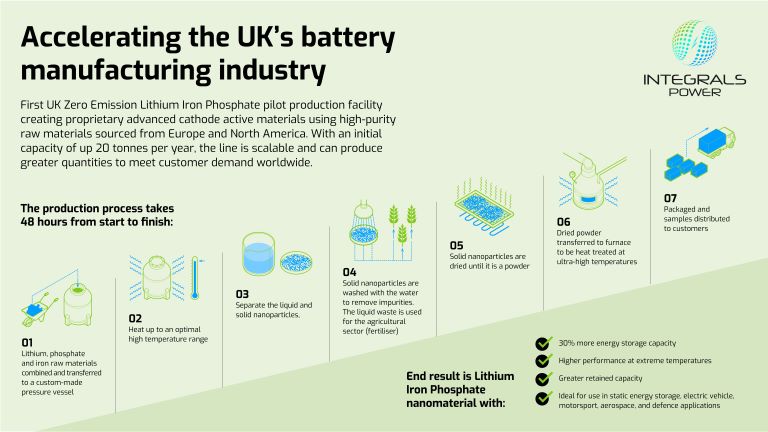Validated at C-rates up to an extreme 10C, the tests found that at 5C, the LMFP material retained 92% of its original capacity, and at 2C, 99%. Even at 10C, which is far beyond the limits of any use case, capacity retention came in at 60%.
The collective results, provided by customers and testing and research company QinetiQ, demonstrate the material’s ability to deliver high performance without compromising durability – attributes essential to demanding applications such as electric vehicles (EV).
QinetiQ’s assessments follow other third-party testing last year that showed Integrals Power had achieved the breakthrough of incorporating a Manganese content of 80% and delivering nearly 150 mAh/gr specific capacity, while overcoming the reduction in energy density – and therefore EV range – that usually occurs at such high levels.
Consequently, Integrals Power has demonstrated that its LMFP material can be used to make cells that will enable battery packs to deliver an optimal balance of high performance, long range, and long life that exceeds the capability of Lithium Iron Phosphate (LFP) but at less cost and less reliance on critical minerals than Nickel Cobalt Manganese (NCM), or achieve the same given range using fewer cells, therefore enabling lighter, less expensive batteries.
Integrals Power Founder and CEO, Behnam Hormozi, said: “We’re extremely proud of the test results QinetiQ achieved using our LMFP cathode active materials because they show that we’ve delivered higher C-rate performance and higher retained capacity compromise.
“Together with the proven energy density improvements of up to 20% compared to LFP unlocked by our 80% Manganese content and higher voltage profile of 4.1V, we are able to demonstrate to our customers around the world that we can enable significant cost and weight reductions, and more compact, more sustainable, and longer-lasting battery pack designs.”
QinetiQ conducted the tests on pouch cells made using the Integrals Power LMFP material and standard commercial-grade graphite anodes and liquid electrolyte. Each cell was tested at an electrode loading of 2mAh/cm2.
The LMFP used in the tests is one of a wide range of 25 cathode active materials developed and patented by Integrals Power. All are developed and manufactured at the company’s UK facility, which includes a pilot plant capable of producing 20 tonnes a year from high-purity raw materials rather than bulk precursors.

Samples are already with wide range of customers across the battery manufacturing, including energy storage, and electric vehicle EV sectors for evaluation and benchmarking.













